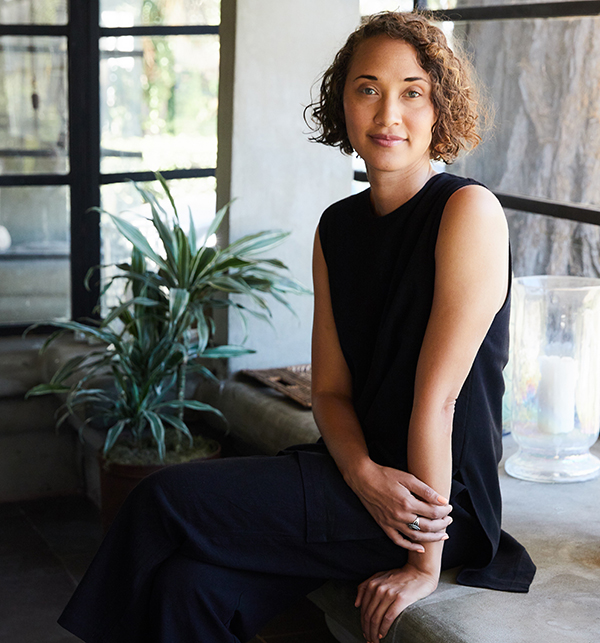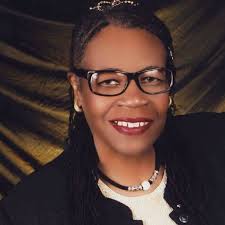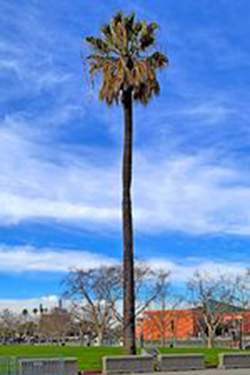By Darlene Donloe
Contributing Writer
Ever since she was a kid, Cameron Shaw wanted to be “a million different things.”
As a youngster, the Los Angeles native would visit numerous museums with her school and her family. At the time, she wasn’t thinking about art as a career, but all that changed when she attended Yale University and began studying art history.
“I remember standing in front of a painting in the Yale art gallery,” Shaw said. It was like a light switch went on in my brain. I was having all of these exciting new thoughts. I had to pursue this feeling. It felt great. I did an internship at The Getty. I’ve worked in art ever since.”
Shaw did a curatorial internship in the Getty Museum’s sculpture and decorative arts department before heading to the Norton Family Foundation where she “fell in love with the idea of living with contemporary art.” She then did a nine-month fellowship at the National Gallery of Art in Washington, D.C. before moving to New York to be a freelance writer and editor and to work in the David Zwirner Gallery.

She then headed to New Orleans where she co-founded the Pelican Bomb, an online publication and nonprofit contemporary visual arts organization that operated from 2011 to 2018.
Today Shaw, 40, serves as the California African American Museum’s executive director. In February 2021, she took the reins when Executive Director George O. Davis retired. Prior to that, she had served as the deputy director and chief curator, overseeing curatorial affairs, education and public programming, and communications and marketing efforts.
As a tribute to pop/soul singer Tina Turner’s 1984 album of the same name, Shaw curated CAAM’s 2020 exhibition “Nikita Gale: Private Dancer.”
After Pelican Bomb closed “intentionally,” Shaw decided to move back home to Los Angeles to be “near family.”
“I had the privilege of reflecting on what the next phase of my life was going to be,” said Shaw, a freelance writer and editor. “I realized it was critically important to my sense of purpose to be of service to the Black community. The CAAM job emerged and offered me the opportunity to use my knowledge and experience and put it into service to the Black community. It was a perfect match.”
A veteran of the art world, Shaw successfully guided CAAM through the difficult segments of the pandemic, including making major shifts to finally open for in-person visits as of July 2021. Shaw, who is inviting “everyone to come out,” to the museum, said the institution continues to move “back and forth with remote and in-person programming.”
In her role, Shaw guides the museum by using the themes of Black spirituality and ancestral technologies, Black Abstraction, environmental justice, and liberating the Black archives by making them more accessible.
Shaw wears her love of art on her sleeve and wants people to “feel” the history and experience of Black life when they walk into each one of its five galleries.
I recently caught up with Shaw to talk about the importance of and future of the California African American Museum.
DD: What do you see as your role as the executive director of CAAM?
CS: To guide the vision of CAAM. We have two milestones coming up. We have the 50th anniversary of our charter in 2027 and the Olympics in 2028. CAAM’s home in the park was completed to coincide with the 1984 summer games in LA. This is a really critical time for us to think of where we’ve been, where we are now, and where we’re going in the future.
DD: What could you do better?
CS: The goal is for CAAM to be the center of Black ideas on the West Coast. CAAM has the opportunity to look at what makes our West Coast Black history unique in terms of art, literature, civic accomplishments, film, and TV. We can go beyond the visual arts.
DD: What is the state of Black art and Black artists?
CS: We’re experiencing a renaissance of Black art. It’s in the individual art that artists are making. It’s in the storytellers in multi-media. It’s in music. It is literally all around us.
DD: For those who have never been there, describe the museum. When you walk into the museum what do you see?
CS: We have five galleries. Each one can be a portal to a different moment or perspective of Black life, history and the Black experience. I think people can feel that when they walk into each gallery. I think that’s really important.
DD: What are the criteria for exhibitions?
CS: We work with a really talented group of curators on staff whose expertise encompasses history and the visual arts. It’s their knowledge, interest and relationships that lead our exhibition program. We also work with independent curators and scholars and other museums with traveling exhibitions. We work to ensure we are providing a diverse program that speaks to many audiences.
DD: Why should the community support the museum?
CS: CAAM’s mission today is as relevant today as it was in 1977, which is to provide a dynamic and accessible place for all people to see Black lives valued and reflected. It’s still a critical need in the country and a critical need in the city.
DD: As a native Angeleno, what does the museum mean to you personally?
CS: It’s a type of homecoming for me. We are a multi-generation family. We don’t live far from the museum. I would go to CAAM with my parents, who understood who I was. They gave me room and inspiration to grow.
DD: How can you get more Black people interested in art?
CS: That is absolutely the work. It’s about people seeing themselves when they come through our doors. Having the opportunity to experience things that are important, relevant and inspiring. We think about ways to reach new audiences through public programming. Things like family craft activities, lectures and a monthly yoga class. We recently worked with Prosperity Market to have a farmers’ market outside of CAAM. We’re thinking about ways the museum can intersect with people’s daily lives.
DD: In what direction is the museum going?
CS: We’re continuing on the trajectory it’s been on. Growing our reputation as a respected institution in the city. Now it’s about how to best care for and renovate our building.
DD: What has been the biggest obstacle since you took over the reins of CAAM?
CS: Expanding our capacity. During COVID we had six people retire and other staff depart. We are rebuilding our staff. The people are the core element. We are a small staff. We currently have 17 people. We have filled four full-time positions since December.
DD: When you’re not busy helming CAAM, what can we find you doing?
CS: I spend a lot of time with family. My mom and dad are still in the house I grew up in. I’m over there all the time. My immediate and extended family are still here. Pre-pandemic you would find me at restaurants, the movies, dance performances, and enjoying live music. I love good food. I love to eat. I love watching short fiction. I’m reading a number of leadership books. I also love to watch TV and hike.
DD: Bonus question: What would you attempt if you knew you couldn’t fail?
CS: I’d flap my wings and go.
The California African American Museum, located in Exposition Park near downtown Los Angeles, was established in 1977 by the state of California. The museum, which has no endowment, is primarily state-funded and free to the public.
“The Q&A” is a new feature of Wave Newspapers asking provocative or engaging questions of some of L.A.’s most popular newsmakers or celebrities.
Darlene Donloe is a freelance reporter for Wave Newspapers who covers South Los Angeles. She can be reached at ddonloe@gmail.com.












